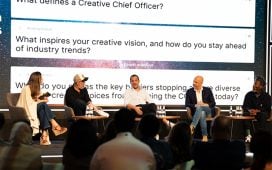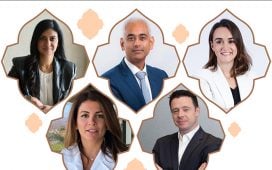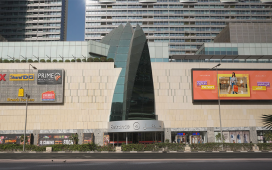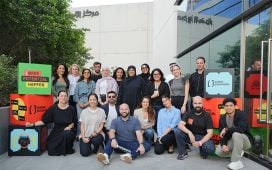
Campaign Middle East: Tell us more about Viu.
Rohit D’Silva: Viu began in 2015 as an OTT online streaming platform. Our parent company PCCW Group has been in the telecoms and media business for a long time. We wanted to build a regional streaming service in Asia. Today we serve across 23 markets, after betting on the ‘freemium’ model and original content.
Are you listening? To radio, podcasts, streaming music? Join us in our next Online Briefing, Audio 2022 to discuss all things aural. Join us on Thursday, April 14 to debate all things aural.
What do subscribers get?
Free users get a huge library and can watch with ad breaks. Premium customers can access more premium content (Arabic and Korean originals, Hollywood TV series and movies, plus Turkish dramas) and can download content to watch later offline. There’s a huge opportunity for curated, brand-safe, premium digital video. We’ve focused on investing in content and, despite being in the region for only three years, have produced about 42 Arabic originals and extended our vast catalogue of foreign language originals to MENA audiences.
Are these originals only available on Viu?
A significant portion are exclusive for Viu, because these feature unique themes and storylines. We try to pick out diverse topics which suit the OTT environment. Much of our content sits well on TV too, as we work with broadcast partners in the UAE, Saudi Arabia and Egypt. Brands want to associate with quality content. It’s not about TV versus digital. Both have different benefits. We want to be part of the huge content creation opportunity in the region and are always looking for ways to accelerate the production of quality content.
That’s an interesting thought with regards to edgier content for VOD. Is that because you can then argue that people have the choice to view it or not?
Maybe with some topics, yes. We operate in many markets where cultural sensitivities are like the Middle East. So, when we’re talking about original content, it’s always through the lens of what audiences want. We have more flexibility, as we are not bound by a format like TV. With streaming, it doesn’t have to be a specific number or duration of episodes. Digital allows us to innovate more and faster.
Are you producing content specifically for Ramadan? What is the demand for in this region how is it different from other regions?
We witnessed a 75 per cent increase in the consumption of Ramadan content on our platform last year. As a macro trend, consumption on digital during Ramadan is increasing and we are excited. When people consume on digital, they are experimenting. Interestingly, users over the last few years are trying out Korean content during Ramadan. This wasn’t a surprise, as Viu bet on Korean content in 2015 and built an entire business in South East Asia around it. Thanks to some of the other global platforms, Korean content has now become cool globally. People used to not be comfortable with different languages, but that’s changing now. On the Arabic side, we’ve worked with producers in Egypt to produce Saudi, Emirati and Pan-Arab shows. This year, we have nine star-studded Arabic originals for Ramadan, including Shoghl Aali (with Fifi Abdou and Shereen Reda), Pablo (with Hassan Al-Raddad and Arwa Gouda) and Wojoooh (with Hana Motawei). We aim to significantly grow our monthly active users, plus the user engagement and completion rates for our content. All the performance-linked metrics that you get on digital, but with TV-like engagement.
How are people watching Viu?
Primarily on mobile, which is something I didn’t think would happen till about five years ago. Today we are used to consuming so much video on mobile in general that we’re starting to consume things which we normally would’ve saved for a big screen.
How are marketers and brands capitalising on this? How are they advertising? What do marketers want from your product?
They take interest, think it’s relevant and ask for more details: How can they ensure a presence on Viu?. What options do they have? How can they work better with this medium? Our job is to offer the right solutions and to onboard them faster. Ultimately we must produce the right content and more of it to get more engaging stories out there. This gives brands the option to target our users effectively.
What other conversations are you having? What do advertisers want from Viu?
Mostly it’s about the audience and their effectiveness. How to measure the results and data which we can give advertisers. The core questions in digital advertising are: Will we get X number of impressions and x percentage completion rate? And will we get them on time?
You mentioned that you’ve got payment partnerships with telcos. Viu (uniquely in the region) allows users to pay daily. What difference does this make?
In emerging, as well as other, markets, our freemium hybrid model works well. Affordability has not been an issue in the GCC, but the willingness to pay was limited. Our model is very focused on Viu-ers experiencing content for free. Our belief is that if you must take people on that journey, allow them this flexibility. For digital products, the key element is the ease of use and exit. Do you want to pay for just one day? Fine, no problem. With telcos as partners, we can charge customers through different billing mechanisms and for different packages (monthly, daily, etc.).









